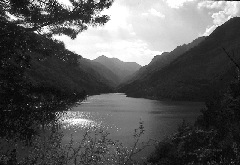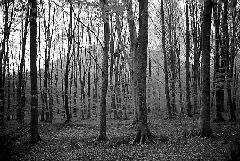 Wilderness is making a comeback in Europe. There are three packs of wolves in Saxony (Germany); the European lynx has re-appeared in numerous enclaves in Western Europe; the Carpathian Mountains in Romania make up the last large wilderness core area on the continent (outside the far north), with healthy populations of wolves, brown bear, lynx, wild boar and more, in old growth forests! Many organizations and initiatives are at work- PAN Parks is applying interesting criteria and designating wilderness across Europe; Wild Europe is a policy initiative embraced by the EU, looking to protect at the “last 2%” of wildlands; the Wilderness Foundation UK is advocating and implementing wilderness-based social programs such as turnAround; the Wilderness Foundation (Germany) just co-hosted a symposium on wilderness in Germany; the Wilderness Associazione Italia has designated 42 wilderness areas in Italy over the previous 20 years – and more.
Wilderness is making a comeback in Europe. There are three packs of wolves in Saxony (Germany); the European lynx has re-appeared in numerous enclaves in Western Europe; the Carpathian Mountains in Romania make up the last large wilderness core area on the continent (outside the far north), with healthy populations of wolves, brown bear, lynx, wild boar and more, in old growth forests! Many organizations and initiatives are at work- PAN Parks is applying interesting criteria and designating wilderness across Europe; Wild Europe is a policy initiative embraced by the EU, looking to protect at the “last 2%” of wildlands; the Wilderness Foundation UK is advocating and implementing wilderness-based social programs such as turnAround; the Wilderness Foundation (Germany) just co-hosted a symposium on wilderness in Germany; the Wilderness Associazione Italia has designated 42 wilderness areas in Italy over the previous 20 years – and more.
For now, I encourage you to read A Perspective on Wilderness in Europe (soon to be available online) from our latest International Journal of Wilderness, by Franco Zunino the founder of Wilderness Associazione Italia . It tells the story of his 30 years quest for wilderness recognition and protection in Italy. It is an inspiring and successful story of vision and hard work for wilderness. And it is on-going!
 Over the following months I will report on these initiatives and others in Europe, as well as WILD’s long standing work in Africa, Latin America and Asia. Wilderness is on the move, but increasing population impacts, economic growth, and the wild card of global warming are a multi-faceted collision bearing down on wild nature and human society. Let?s celebrate our successes, but concentrate on the greater and rising tide of challenges – now.
Over the following months I will report on these initiatives and others in Europe, as well as WILD’s long standing work in Africa, Latin America and Asia. Wilderness is on the move, but increasing population impacts, economic growth, and the wild card of global warming are a multi-faceted collision bearing down on wild nature and human society. Let?s celebrate our successes, but concentrate on the greater and rising tide of challenges – now.
– Vance
